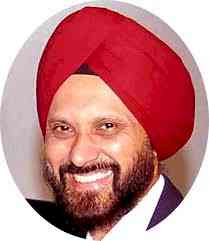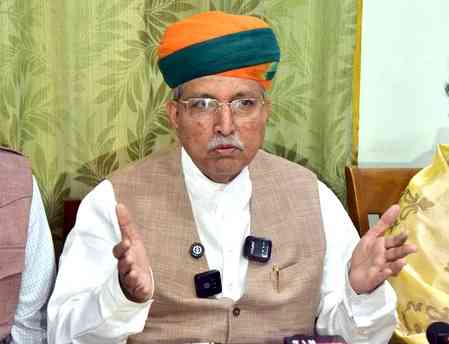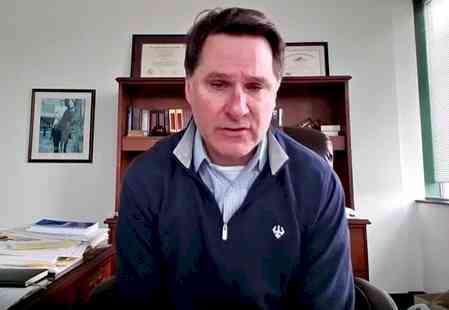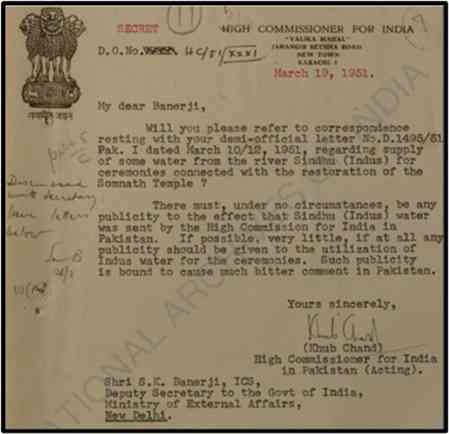Why Let Good Health Go Up In Smoke?
Smoking kills. Tobacco use is the single-most preventable cause of death globally and is currently responsible for killing one in 10 adults. More than 80 per cent of these preventable deaths will be among people living in low and middle-income countries. Every cigarette takes away five minutes of one’s life.

by Dr Harinder Singh Bedi
Smoking kills. Tobacco use is the single-most preventable cause of death globally and is currently responsible for killing one in 10 adults. More than 80 per cent of these preventable deaths will be among people living in low and middle-income countries. Every cigarette takes away five minutes of one’s life.
According to the Indian Council of Medical Research (ICMR), WHO and the Tobacco Institute of India there is one death every eight seconds in India directly related to smoking. In India, there are 250 million tobacco users, that is, about one in four. They constitute about 57 per cent of adult males and 3 per cent of adult females. About 17 per cent male and 9 per cent female smokers are in the age group of 13-17 years. Around 50 per cent smoke bidis, while 36 per cent chew tobacco / gutka and most start smoking at the age of 15 years.
The theme for World No-Tobacco Day 2024 is 'Protecting Children from Tobacco Industry Interference'. This theme focuses on advocating for policies and measures that prevent the tobacco industry from targeting young people with harmful tobacco products.
Tobacco companies are dumping their stock in India, Indonesia and China — which according to a World Bank Study are the only countries which have had an increased consumption of tobacco. What is equally alarming is that the companies are targeting the young population to make them addicted – tobacco is as addictive as heroin! About 5,500 Indian children start smoking every day, joining the 4 million under-15 children who already use tobacco.
Effect on cardiovascular diseases
Tobacco abuse is a major risk factor for coronary artery disease, the blockage of heart arteries leading to a heart attack. According to a WHO estimate, in developing countries, 35 per cent of all deaths related to heart and blood vessel disorders in the 35-69 years age group are related to smoking. The incidence of heart disease is three to five times higher in smokers than in non-smokers. People who smoke 20 or more cigarettes a day are twice as likely to have a heart attack as non-smokers. Their chances of dying of a heart attack are 70 per cent more than in non-smokers.
How smoking affects the heart
Cigarette and tobacco smoke, high blood cholesterol, high blood pressure, physical inactivity, obesity and diabetes are the six major independent risk factors for coronary heart disease that you can modify or control. Cigarette smoking is so widespread and significant as a risk factor that the Surgeon General of USA has called it “the leading preventable cause of disease and deaths in the United States.” Cigarette smoking increases the risk of coronary heart disease by increasing blood pressure, decreasing exercise tolerance, promoting the deposition of fat in the wall of the arteries by damaging the cells lining the arteries and increasing the tendency for blood to clot. The effect is cumulative — the more you smoke, the greater your risk. A person’s risk of heart attack greatly increases with the number of cigarettes he or she smokes. People who smoke a pack a day have more than twice the risk of heart attack than non-smokers.
Cigarette smoking is the most important risk factor for young men and women. It produces a greater relative risk in persons under age 50 than in those over 50. Cigarette smoking is an important risk factor for stroke of the brain. It is equally important in causing blockage of the leg arteries leading to gangrene and amputation .
One out of five stroke cases are attributed to smoking. The risk for brain haemorrhage is three to four times higher in heavy smokers, while stroke due to occlusion of a brain artery is 1.5 - 3 times more common in heavy smokers.
Hardening of the arteries of the legs is one of the most dreaded complications of smoking. Smokers have a 16 times greater risk of developing peripheral vascular disease (blocked blood vessels in the legs or feet) than people who have never smoked. Over 95 per cent of the patients who have occlusions in the leg arteries are smokers. The blockage, if unchecked, leads to gangrene and amputation of limbs. Smoking is a major cause of respiratory ailments such as lung cancer, chronic bronchitis, frequent pneumonia and respiratory failure. About 80 per cent of the deaths from respiratory diseases are attributable to smoking. Lung cancer accounts for 15 per cent of all cancers in India. Smoking also increases the risk of cancer of the larynx (voice box), mouth cavity, and oesophagus (food pipe).
Passive or secondhand smoke
The link between second-hand smoke (also called environmental tobacco smoke) and disease is very strong and is a major cause of cardiovascular-related disability and death in non smokers.
Some teens, especially girls, start smoking because they think it may help keep their weight down. The illnesses that smoking can cause, like lung diseases or cancer, do cause weight loss — but that’s not a very good way for people to fit into their clothes! Smoking is expensive. Not only does smoking damage health, it costs an arm and a leg (actually literally – as it can lead to amputation ). One of the goals of the WHO has been to encourage governments to raise taxes on tobacco to reduce its consumption.
How can quitting smoking be helpful? Quitting smoking helps to prolong a healthy life, reduces risk of disease, (including heart disease, heart attack, high blood pressure, lung cancer, throat cancer, emphysema, ulcers, gum disease and other conditions), improves health and looks (Quitting can help you prevent face wrinkles, get rid of stained teeth and improve your skin). It improves the sense of taste and smell and saves money .
All forms of tobacco — cigarettes, pipes, cigars, and smokeless tobacco — are hazardous. It doesn't help to substitute products that seem like they're better for you than regular cigarettes, such as filter or low-tar cigarettes. Nicotine in tobacco is responsible for the addictive nature of tobacco. It stimulates the nervous system and the heart . It causes the ‘lift’ experienced seconds after a puff. Stimulation of the nervous system may produce a temporary state of alertness but chronic use leads to a state of over-excitation, lack of sleep, irritability, tremors and nervous exhaustion. Nicotine increases the heart rate by 15 – 20 beats per minute, can cause palpitation , and increases the blood pressure by 10-20 mm Hg within three to five seconds of a puff. Smoking is a slow but sure killer. Indian cigarettes and bidis have a very high nicotine content. Except for the fact that it is addictive, makes you sick and hastens your death, nicotine is a wonderful drug. Tobacco smoke also contains the deadly carbon monoxide and numerous other solid and gaseous chemicals. Tar is an aggregate of the particulate matter in cigarette smoke. Many chemicals in tar irritate the airway passage of the respiratory tract and stimulate production of sticky mucus, causing smokers cough and chronic bronchitis. Other chemicals in tar initiate and perpetuate various types of cancer. The present nationwide ban on smoking in the workplace is truly commendable and will potentially prevent thousands of heart attacks and strokes. Such a ban also substantially benefits nonsmokers who face risks from secondhand smoke. Smokers who quit or even just cut down on cigarettes can begin to reap the health benefits within a few months. Individuals who gradually quit smoking get improvements in risk factors for heart disease, including lower cholesterol and carbon monoxide levels. It is never too late to stop smoking. The benefits begin as soon as you stop. Staying smoke free will give you a whole lot more of everything— more energy, better performance, better looks, more money in your pocket, and, in the long run, more life to live!
(The writer is Director Cardio Vascular & Thoracic Sciences, Park Grecian Hospital Mohali Punjab and was earlier at the Escorts Heart New Delhi and the St Vincent’s Hospital Sydney.)


 City Air News
City Air News 







